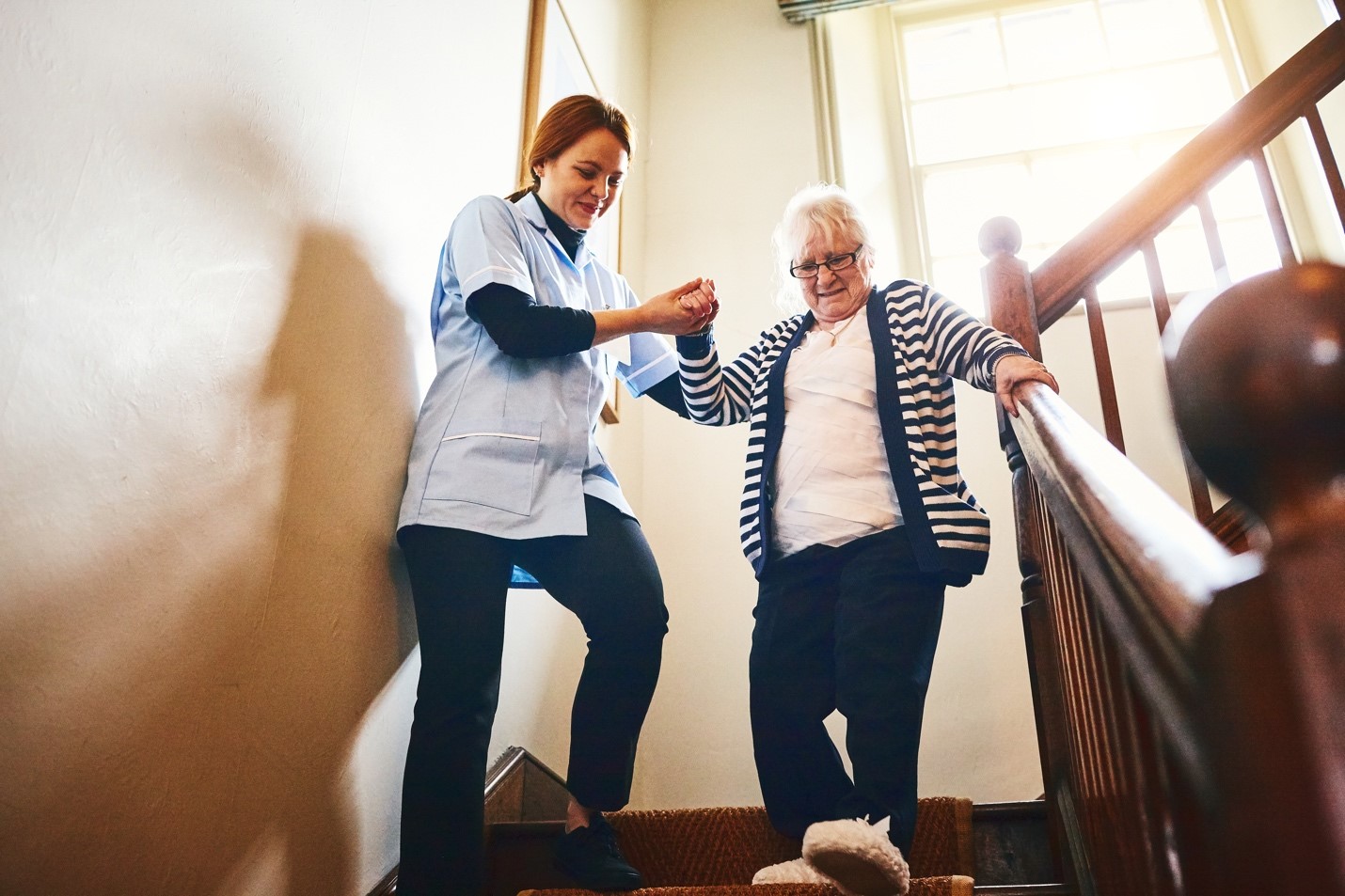
With more than 28 years of healthcare at home experience, Jamie Summerfelt, M.Ed, MSPT, president and CEO of Visiting Nurse Association (VNA) in Omaha, Nebraska, is passionate about home care. He began his career in home health as a physical therapist, providing outpatient care in the 1970s. Summerfelt loves the gratitude and joy from clients who receive care in the home so they can be more comfortable and maintain their independence. As the first person to lead VNA who is not from a nursing background, his experiences as a physical therapist continue to inform his views on the importance of home care.
A Vision for Home Care
The vision for VNA is to improve the health and the lives of people in the community, and as Summerfelt emphasizes, it’s a vision not just for VNA, but for the whole community. To achieve this vision, VNA looks to use every resource it has available in order to provide the necessary care and services to those it serves. In the early days of VNA, this meant providing services before they could be billed through Medicare, Medicaid and commercial insurance. To help cover costs and provide services, VNA relied on donations from community members. That is still true today. Between 20 to 25% of funding for VNA comes from the United Way, and through direct donations and planned gifts to the organization.
Extending the Healthcare Capacity
Harnessing the power of community relationships is something that Summerfelt sees as integral to the success of extending the capacity to provide healthcare at home. In establishing partnerships with hospitals, physicians and others in the community, home care agencies are critical partners to help ensure success in transitional and chronic care. Summerfelt points to using the Coleman Care Transitions Intervention (CTI) model. This four-week program enables patients with complex care needs and their family caregivers to receive specific tools and work with a transitions coach to learn self-management skills that will ensure their needs are met during the transition from hospital to home. Using this model, home healthcare can help reduce rehospitalizations by providing education about the client’s health condition and ensure that medications are taken as prescribed and that patients can keep physicians’ appointments.
To build partnerships like this, Summerfelt emphasizes the importance of a relationship built on trust. Having a stellar reputation in the community will help agencies be part of a conversation where they can then demonstrate their knowledge and showcase their use of data — both internal and objective — to back up their results. Agencies must also show partners, and potential partners, how health care at home can help them achieve their goals.
Disaster Preparedness Planning
An important service that home care agencies provide for their clients and their communities is implementing disaster preparedness plans. Recently, VNA’s plans were put into action when Nebraska was hit with flooding. Providing care for clients in their homes during natural disasters can be challenging, but in coming together communities can tap into all their resources in order to serve clients and deliver necessary care. In some cases, this may even mean helping to temporarily relocate a client from their home.
Universal Documentation
One opportunity that Summerfelt sees is the implementation of a universal documentation system. Currently, acute care, long-term care and home care all have different ways of capturing clients’ progress and goals. These different systems make it difficult to help clients transition from one level of care to the next, and a universal documentation system would streamline care, ultimately bringing about more efficiencies for both the care providers and the clients.
In looking at the scope of healthcare, Summerfelt notes that there has been a complete return to the past. One hundred and fifty years ago, healthcare was almost exclusively delivered in the home. From there, healthcare evolved to institutional care, where people received care in hospitals, skilled nursing facilities, and similar facilities. Today, as modern medicine continues to evolve, people are living longer and there has been a transition back to delivering care in the home – even the most complex medical diagnoses can be managed in the home. As Summerfelt points out, home remains an ideal setting, lending itself to functional rehab, teaching people how to manage and thrive in their own bedroom, bathroom, and kitchen.
Help Choose Home Podcast
Listen to the full interview with Jamie Summerfelt in the Help Choose Home podcast series to learn more. This episode and others in the series can be found on Apple Podcasts or Google Play.
The Help Choose Home podcast series provides information and resources for families about adult home care options for their senior loved ones. Podcasts are hosted by Merrily Orsini, executive vice president of Axxess and president and CEO of corecubed, an award-winning elder care marketing solutions agency.
Help Choose Home is a collaborative effort by the National Association for Home Care and Hospice (NAHC), Axxess, and corecubed to educate the public about the many benefits of the in-home care industry, which includes non-medical home care, private duty nursing care, medical home health, hospice, and other in-home health and wellness services.
If this episode has been helpful, be sure to leave a five-star review and share the podcast with your friends to help us in the national effort to help choose home! You can connect with Merrily Orsini on Twitter @MerrilyO.
